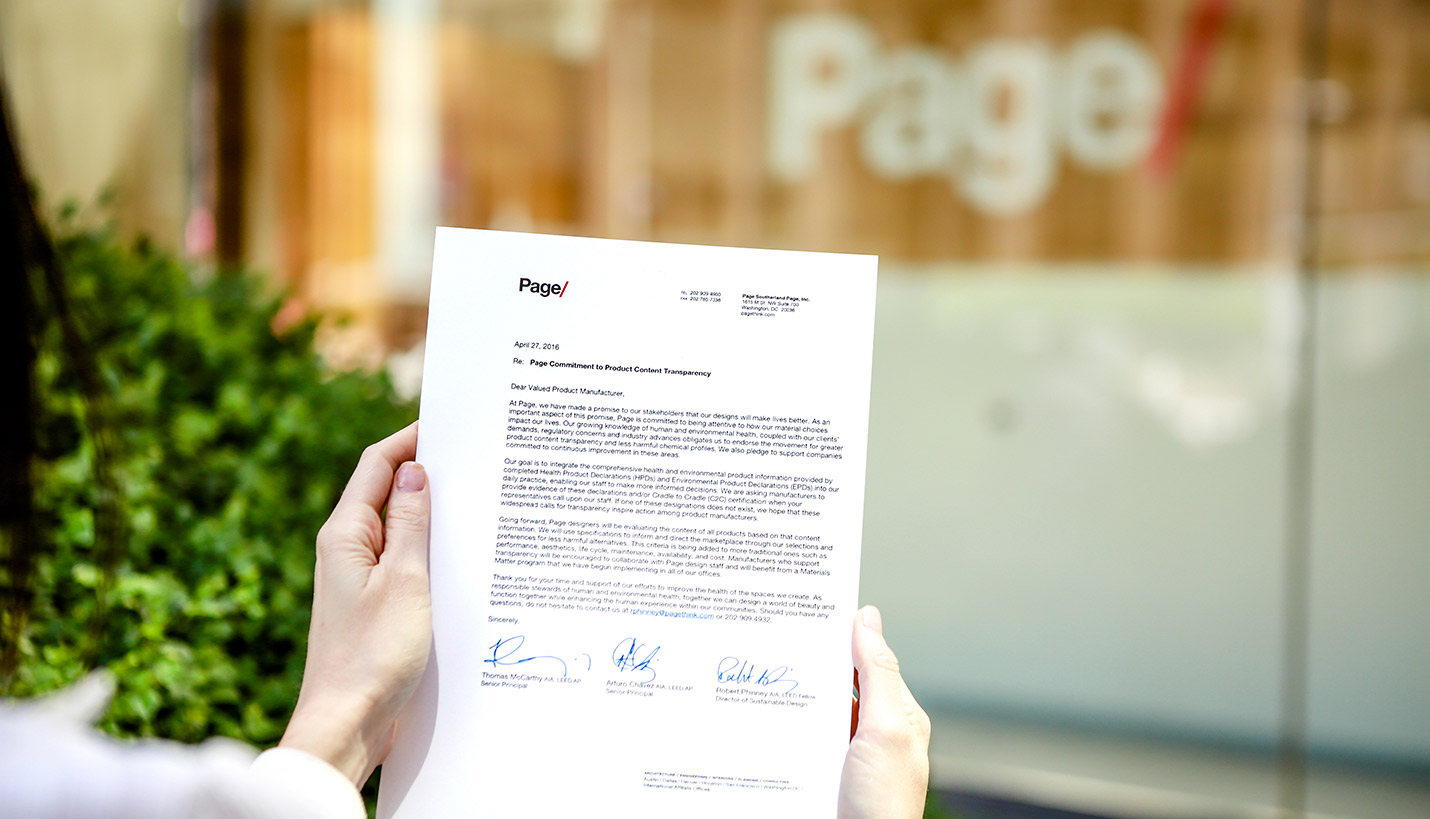

Materials Matter: Commitment to Improved Product Health
As sculptors of our built environment, we rely on the myriad of construction materials available to us to render our creations. For years, we have taken these materials for granted, reveling in the ever growing variations of aesthetics and performance characteristics. And yet in this world of bigger, better, faster, we seem to have forgotten that the spaces we create are more than artistic endeavors, they are places in which we live, learn, play and work. While the recent environmental design movement has been successful in advocating for material choices with lower environmental impact footprints, even these efforts neglect the fact that materials to which we are exposed have a direct impact on our physical health as well.
At Page, we are refining our material selection criteria to begin incorporating the growing body of knowledge around the health impacts that our choices represent. For example, over 70% of the PVC manufactured is used in the buildings our society creates. PVC products typically contain lead, cadmium and phthalates (plasticizers), chemicals that are known carcinogens, endocrine disruptors, and obesogens (chemicals that cause obesity). These toxins leach out over the course of their very long life posing risks to occupants, especially children and is one of the main reasons behind a 2-6% fold increase of the rates of cancer in firefighters exposed to the fumes of burning PVC.
The chemicals that comprise PVC are only a few of the more than 90,000 distinct chemicals classified, with over 70,000 of those used in the various materials and products that we are surrounded by. Worse, we only know of the health impacts of less than half of those. Recent efforts within our industry to push for ingredient transparency has begun to raise awareness both within design practices as well as with product manufacturers. Programs such as the HPDC's Health Product Declaration® Collaborative and International Living Future Institute’s Declare offer the judgment-free means to assess and share this information. These efforts have already seen success as multiple manufacturers have taken a new look at what goes into their products and how new formulations can become less harmful without compromising quality or performance.
To support this advocacy, Page has joined a growing list of design firms in making a commitment that material transparency and health are guiding criteria in our design process. In our commitment letter to product manufacturers, we asked that they partner with these efforts to improve the health outcomes of our built environment. It also let them know that we will be favoring products made by companies that demonstrate an interest in continual improvement with all else being equal. We are supporting our employees in the selection process with a new library labeling system, Materials Matter, as well as a robust library of less harmful options. We also are asking that our employees share this message with vendors and manufacturers with whom they work to identify healthier material options in all of our projects moving forward.
Additional details about this program are available upon request. Please contact Page Sustainable Project Manager Jill Kurtz.
05/09/2016
Blog Resources
Related Posts
- Materials Matter: Identifying & Promoting Healthy Choices
- 2400 Nueces Wins Green Award
- Aerial video tour of massive Exxon Mobil campus near The Woodlands
- The Beauty of Rammed-Earth Homes
- AIA Emerging Leaders Design A Healthier Community
- Page Acquires SST Planners
- How Big Is This? The Importance of Metrics








